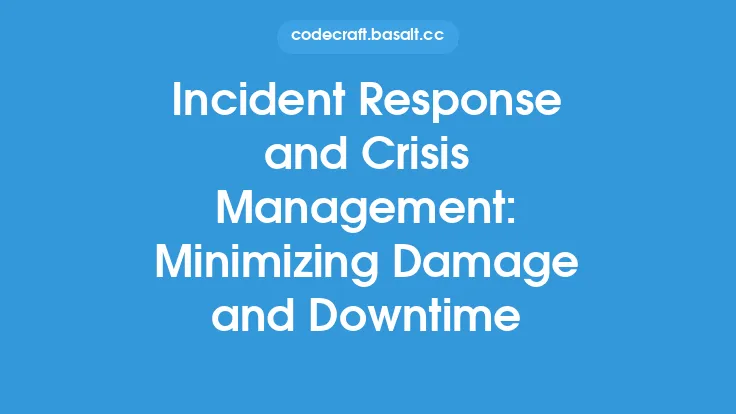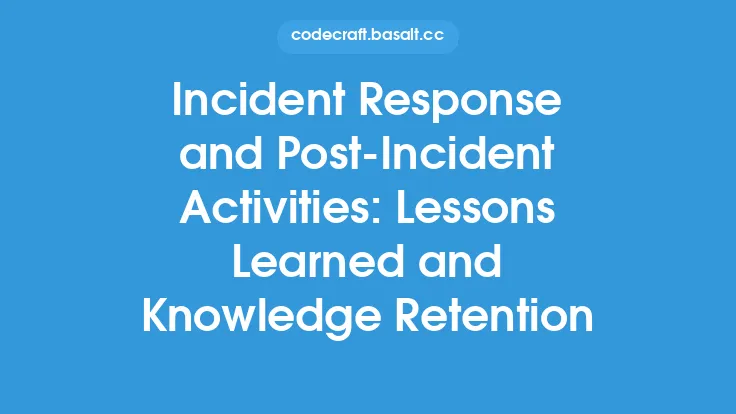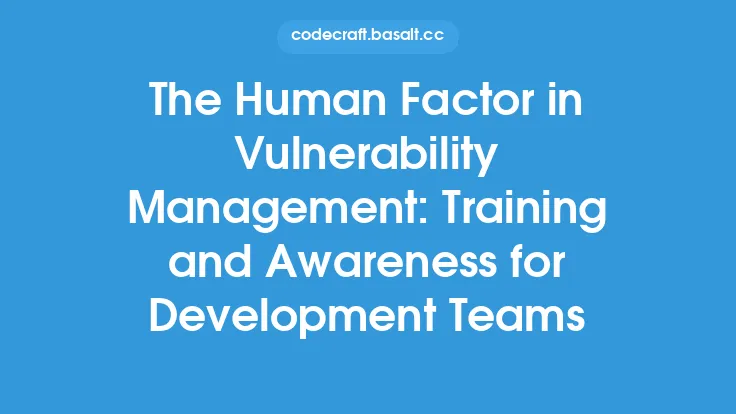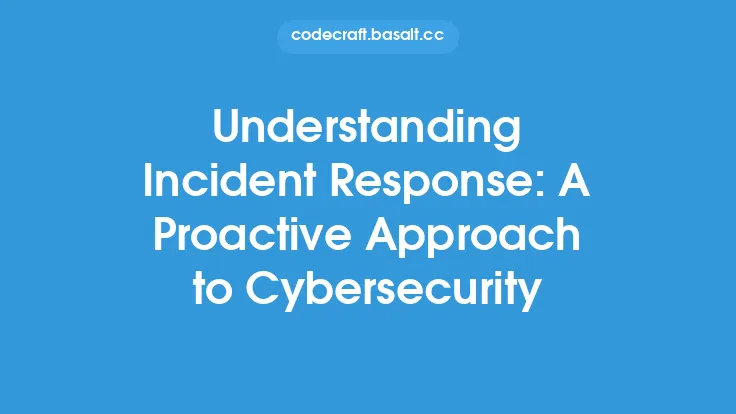In today's complex and ever-evolving cybersecurity landscape, organizations face a multitude of threats that can compromise their systems, data, and reputation. Incident response training and exercises are essential components of a comprehensive cybersecurity strategy, enabling organizations to prepare for, respond to, and recover from security incidents effectively. This article delves into the importance of incident response training and exercises, providing insights into their benefits, types, and best practices for implementation.
Benefits of Incident Response Training and Exercises
Incident response training and exercises offer numerous benefits to organizations, including improved response times, enhanced communication, and increased confidence in handling security incidents. By participating in regular training and exercises, incident response teams can develop the necessary skills and knowledge to respond to various types of incidents, from malware outbreaks to denial-of-service (DoS) attacks. These benefits can be categorized into several key areas:
- Improved response times: Incident response training and exercises enable teams to respond quickly and effectively to security incidents, minimizing downtime and reducing the risk of data breaches.
- Enhanced communication: Regular training and exercises foster better communication among team members, stakeholders, and external parties, ensuring that all parties are informed and aligned during an incident.
- Increased confidence: By practicing incident response scenarios, teams can build confidence in their ability to handle security incidents, reducing the risk of panic and errors during a real incident.
Types of Incident Response Training and Exercises
There are several types of incident response training and exercises that organizations can implement, each with its own unique benefits and objectives. These include:
- Tabletop exercises: These are discussion-based exercises that involve team members and stakeholders discussing and responding to hypothetical incident scenarios.
- Simulation exercises: These exercises involve simulated incidents, such as mock malware outbreaks or DoS attacks, which test the team's response and decision-making skills.
- Live-fire exercises: These exercises involve real-world scenarios, such as penetration testing or red teaming, which test the team's response to actual security threats.
- Virtual exercises: These exercises are conducted online, using virtual environments and scenarios to test the team's response to security incidents.
Best Practices for Implementing Incident Response Training and Exercises
To ensure the effectiveness of incident response training and exercises, organizations should follow several best practices, including:
- Establish clear objectives: Define the objectives and scope of the training and exercises, ensuring that they align with the organization's incident response plan and goals.
- Involve all stakeholders: Include all relevant stakeholders, such as team members, management, and external parties, in the training and exercises to ensure that everyone is aware of their roles and responsibilities.
- Use realistic scenarios: Use realistic and relevant scenarios that reflect the organization's specific security threats and risks.
- Debrief and review: Conduct thorough debriefs and reviews after each exercise, identifying areas for improvement and implementing changes to the incident response plan and procedures.
Technical Aspects of Incident Response Training and Exercises
From a technical perspective, incident response training and exercises should focus on several key areas, including:
- Incident detection and response: Teams should practice detecting and responding to security incidents, using tools such as intrusion detection systems (IDS) and security information and event management (SIEM) systems.
- Network and system analysis: Teams should practice analyzing network and system logs, as well as performing forensic analysis, to identify the root cause of security incidents.
- Communication and collaboration: Teams should practice communicating and collaborating with external parties, such as law enforcement and incident response teams, to ensure effective incident response.
- Continuous monitoring and improvement: Teams should continuously monitor and improve their incident response capabilities, using metrics and feedback to identify areas for improvement.
Conclusion
Incident response training and exercises are critical components of a comprehensive cybersecurity strategy, enabling organizations to prepare for, respond to, and recover from security incidents effectively. By understanding the benefits, types, and best practices for implementing incident response training and exercises, organizations can improve their incident response capabilities, reduce the risk of security incidents, and protect their systems, data, and reputation. Regular training and exercises can help organizations stay ahead of emerging threats and ensure that their incident response teams are equipped to handle the unexpected.





